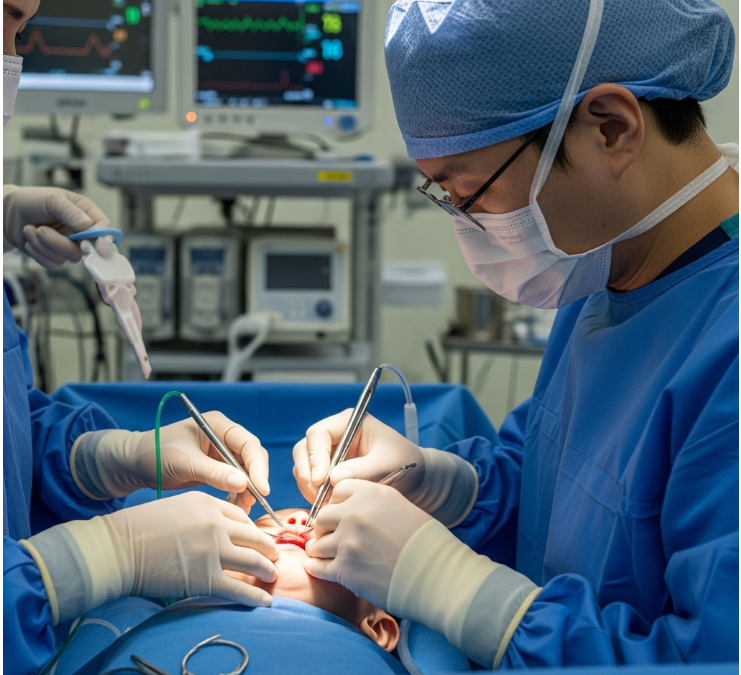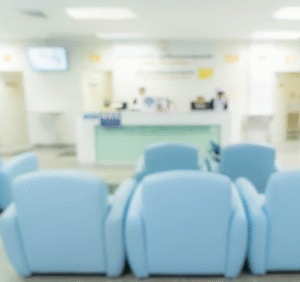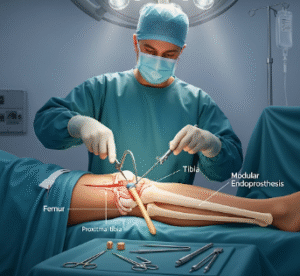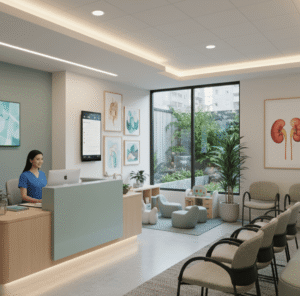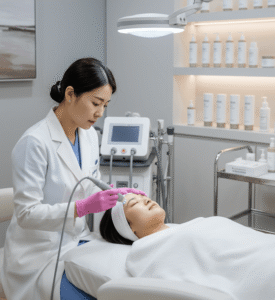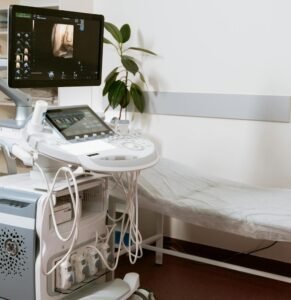What It Is
Cleft lip repair, also known as cheiloplasty, is a surgical procedure to correct a congenital split or gap in the upper lip. This condition occurs when the tissues of the lip fail to fuse properly during early fetal development. A cleft lip may occur alone or together with a cleft palate.
The surgery involves reconstructing the lip, nose, and surrounding muscles to restore both function and appearance. In Korea, cleft lip repair is performed by specialized pediatric plastic surgeons using refined surgical techniques, microsurgical precision, and scar-minimization approaches to provide excellent cosmetic and functional outcomes.
Why It’s Done
Patients undergo cleft lip repair because:
- A cleft lip can interfere with feeding, speech, and facial growth.
- It causes cosmetic and psychological concerns.
- The nose is often affected, leading to asymmetry.
- Early repair improves self-esteem, social integration, and quality of life.
Good candidates include:
- Infants typically aged 3–6 months, once they are healthy enough for anesthesia.
- Children requiring revision surgery to refine appearance or function.
- Adults with untreated clefts or unsatisfactory past repairs.
Alternatives
- Nasoalveolar molding (NAM): A pre-surgical orthodontic device to align tissues before surgery.
- Observation: Not recommended, as untreated clefts can lead to lifelong issues.
- Secondary surgeries: Performed later for speech, dental, or cosmetic improvements.
Preparation
Before cleft lip repair in Korea, patients (or their parents) will:
- Have a consultation with a multidisciplinary cleft team (plastic surgeon, pediatrician, orthodontist, speech therapist).
- Undergo blood tests and anesthesia clearance for infants.
- Possibly use pre-surgical orthodontic devices like NAM for better alignment.
- Discuss timing of surgery and potential staged procedures.
How It’s Done
- Anesthesia: General anesthesia is required.
- Incisions: Planned along natural contours of the lip for minimal scarring.
- Reconstruction: Lip tissues and muscles are repositioned and sutured for natural function and symmetry.
- Nasal correction: If needed, cartilage adjustments are made to improve nostril shape.
- Closure: The incision is closed with very fine sutures to minimize scarring.
- Duration: 1–3 hours depending on complexity.
Recovery
- First week: Swelling and bruising are common; infants usually recover quickly.
- Feeding: Special bottles or feeding instructions may be required for a few weeks.
- Stitches: Typically removed or dissolved within 5–7 days.
- Return to activities: Infants resume normal feeding and play within days.
- Final results: Initial healing in 2–3 weeks, with scars continuing to fade over 6–12 months.
Possible Complications
- Hypertrophic scarring or scar widening.
- Asymmetry of the lip or nose.
- Need for secondary surgeries as the child grows.
- Rare risks: wound breakdown or infection.
Treatment Options in Korea
Diagnosis
Korean cleft teams use physical examination, 3D imaging, and orthodontic evaluation to assess severity and plan individualized treatment.
Medical Treatments
- Pre-surgical orthodontics (NAM devices) to prepare tissues for surgery.
- Speech therapy for older children with associated speech issues.
Surgical or Advanced Therapies
- Primary cleft lip repair (Millard rotation-advancement or Tennison-Randall techniques).
- Nasal correction combined with cleft lip surgery for symmetry.
- Revision cleft lip surgery for refinement in older children or adults.
- Multistage surgeries coordinated with cleft palate and jaw growth treatments.
Rehabilitation and Support
- Long-term follow-up with speech therapy, orthodontics, and psychological support.
- Scar management with silicone gels or laser treatment if needed.
- Multidisciplinary care ensures continuous support from infancy to adulthood.
- International patients benefit from Korea’s dedicated cleft centers, comprehensive pediatric care, and multilingual aftercare programs.

